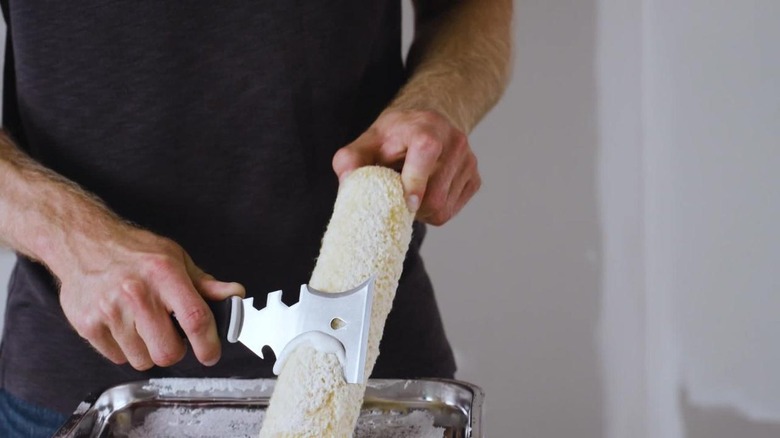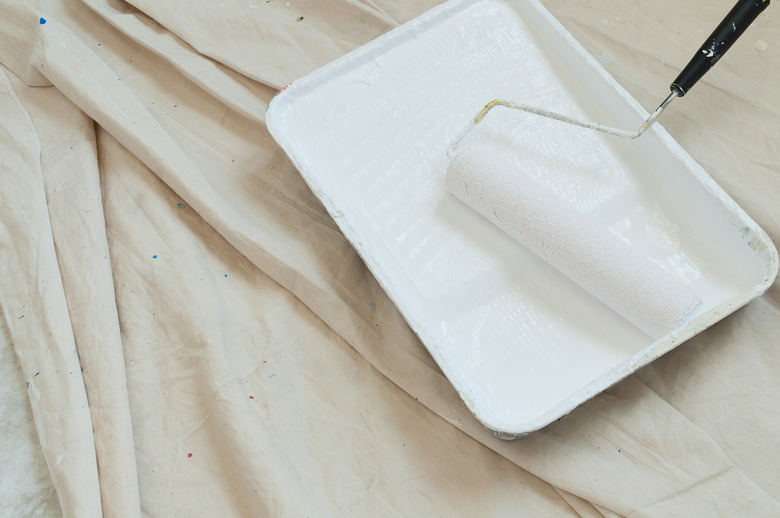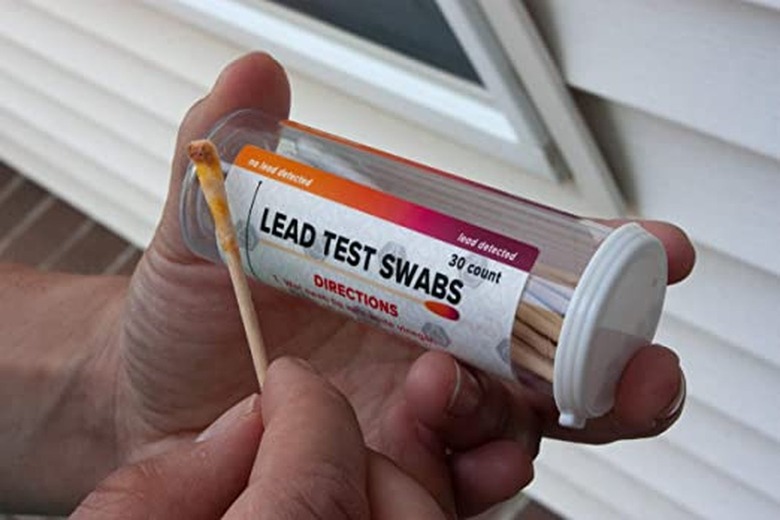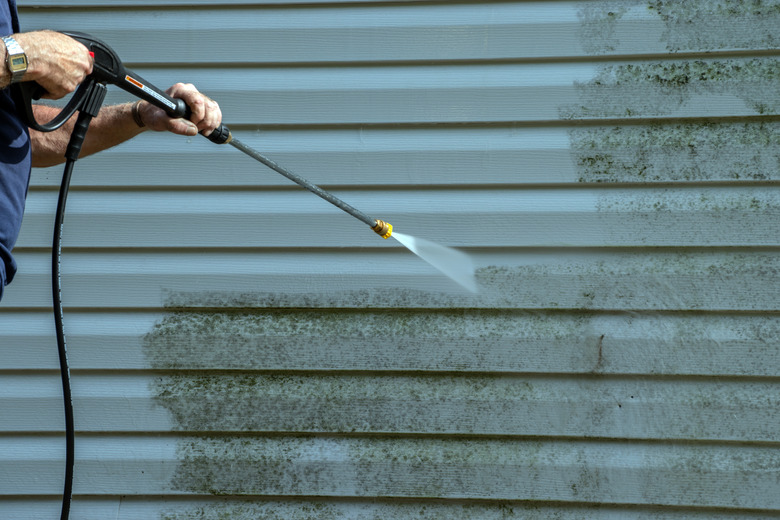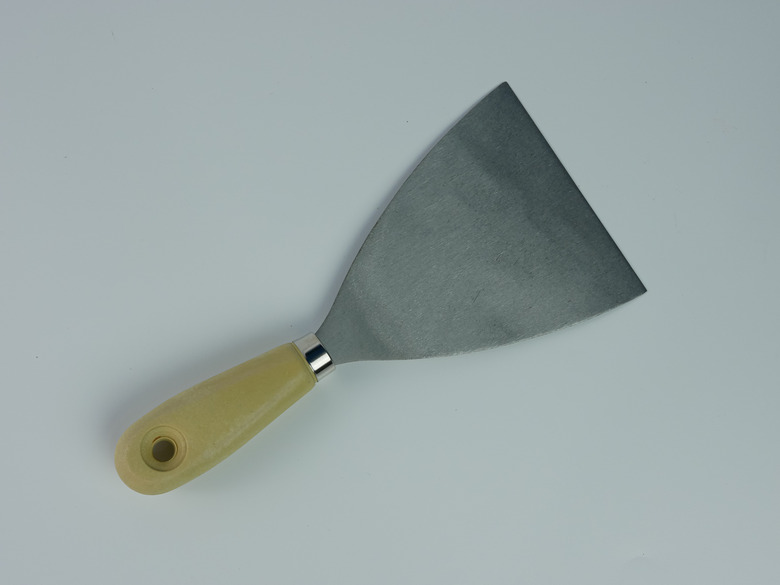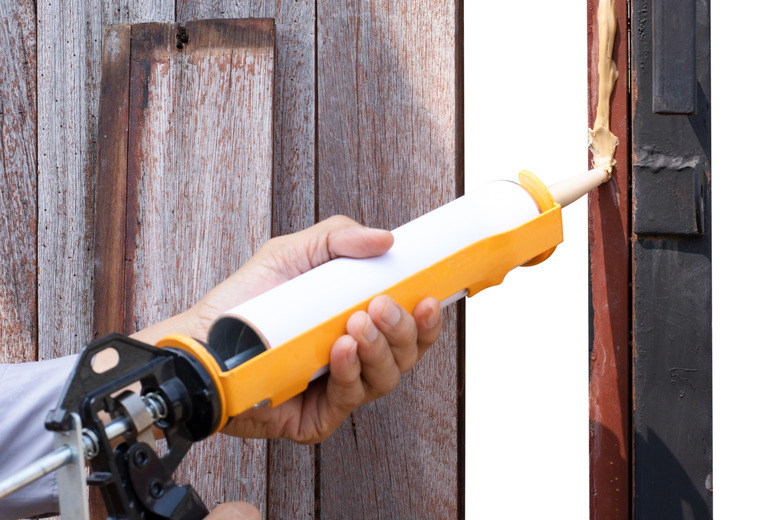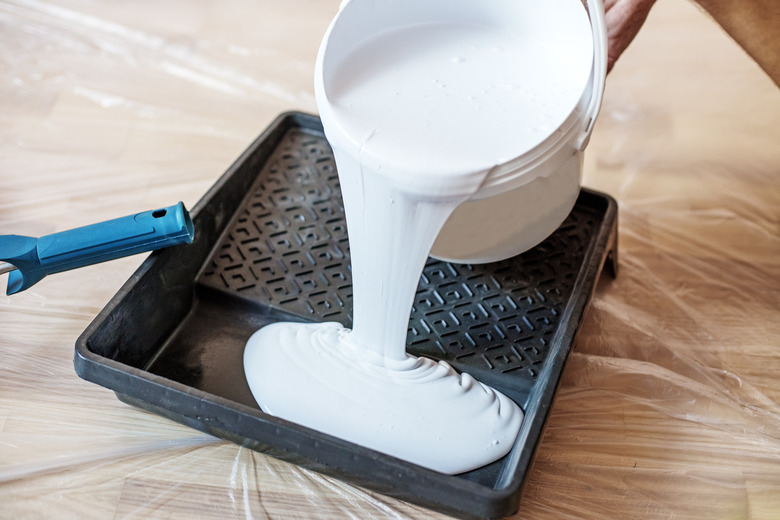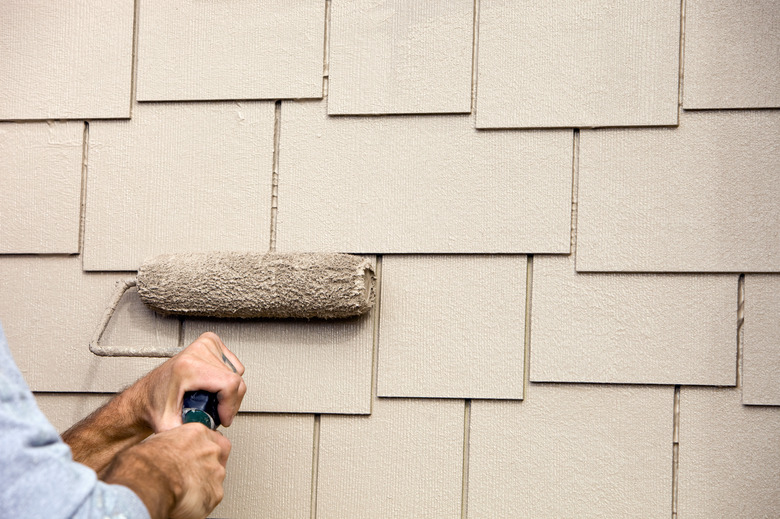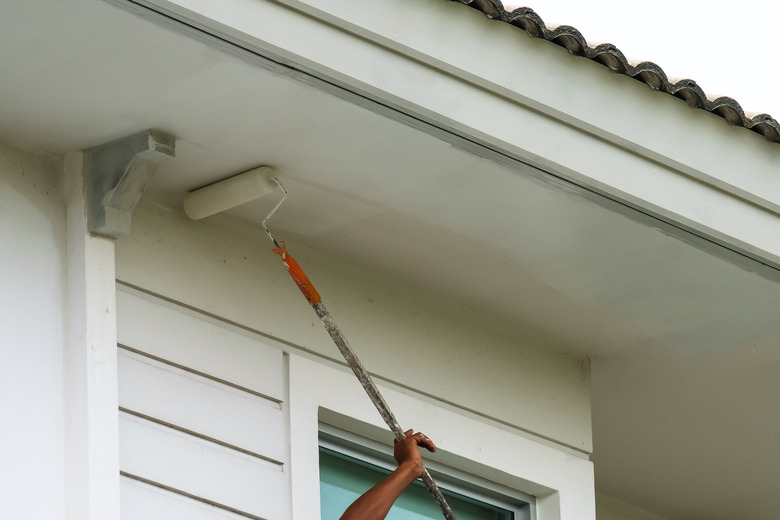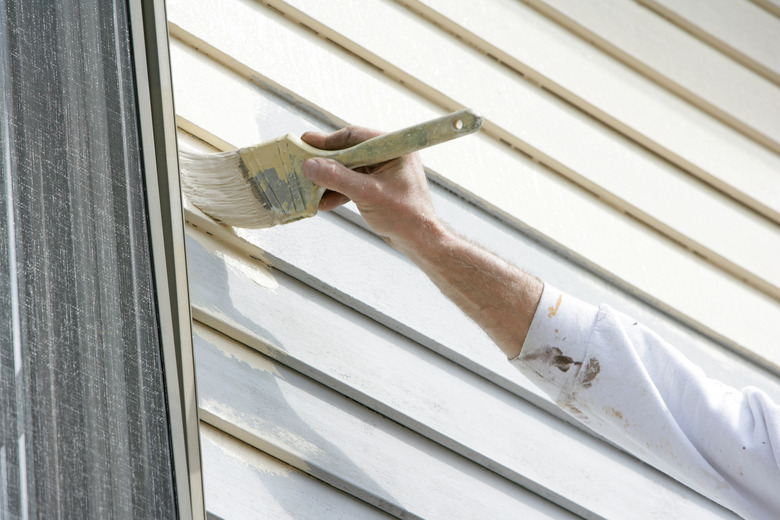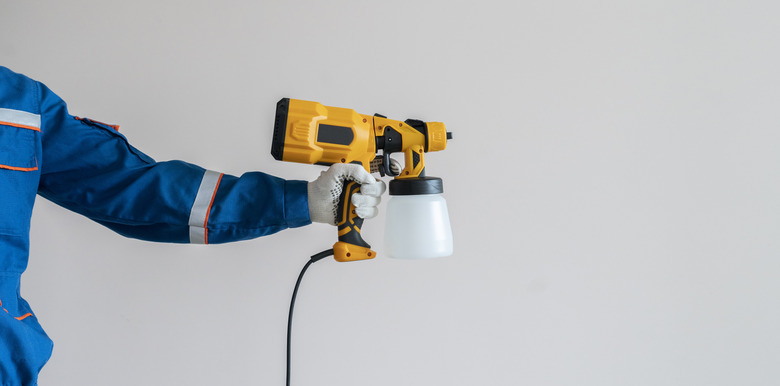12 Essential Tools For Exterior House Painting
We may receive a commission on purchases made from links.
When most people think of house painting, a few important supplies come to mind immediately — high-quality paint, drop cloths, and a solid ladder to name a few. While these are all important, there are additional exterior house painting tools that can help you get professional-quality results.
1. Multipurpose Painter’s Tool
1. Multipurpose Painter's Tool
With a distinctive curved edge, this multipurpose tool goes by several different names based on the number of functions it can perform. The original was the five-in-one tool, but there are now products that offer up to 17 uses for one tool. The functions that most multipurpose tools share include opening paint cans, scraping paint, applying patching material, cleaning rollers (that's what the curved edge is for), driving nails, and pulling nails. Buy a sturdy one that feels good in your hand and keep it with you as you work through the project.
2. Drop Cloths
2. Drop Cloths
Every paint job warrants a set of drop cloths to keep the paint away from where you don't want it to go. To protect lawns and hardscape, like patios and walkways, look for heavy canvas drop cloths with plastic backing. These will absorb the paint without allowing it to leak through fabric. Use light canvas or even plastic to drape over bushes and other plantings.
3. DIY Lead Test
3. DIY Lead Test
Houses built before 1978 may contain lead paint, and inhaling lead can lead to a number of health issues, including headaches, dizziness, and even memory loss. Although lead additives have been banned since 1978, underlying coats of paint on older houses may contain lead. A do-it-yourself lead test can let you know in a few minutes if lead is present. If it is, don't scrape or sand the paint yourself; contact a lead abatement contractor before proceeding.
4. Cleaning Supplies
4. Cleaning Supplies
For a smooth and even finish, prepping your surface before painting is crucial. Paint needs a clean, dry surface to adhere to. In most cases, using a bucket, scrub brush, and garden hose will do the job. There are detergents formulated for cleaning siding. Some detergent containers have a garden hose hookup that turns the container into a low-pressure power washer.
You can also use a pressure washer to do the initial cleaning provided it is safe for your siding type (don't use one if you have wood siding). Follow the manufacturer's directions and when applying, keep the wand at a downward angle. You want to avoid spraying up under the siding. No matter how you clean the surface, let it dry completely before painting.
5. Paint Scraper
5. Paint Scraper
To remove loose paint, you'll need a heavy-duty paint scraper. The type with a long handle will give you some leverage. Also, look for the kind of scraper that uses changeable blades so that you always have a sharp blade handy. You will probably need scrapers of different sizes to reach all areas.
6. Caulk Gun
6. Caulk Gun
Caulk is the professional painter's secret sauce. Caulking around door and window trim and corner boards provides a neat, finished appearance and fills any cracks that will be visible on the finished paint job. Unlike standard caulk guns, dripless guns stop the flow of caulk when you release the trigger. Look for the type that includes a cutter to cut the tip of the caulk tube and an attached puncture tool to reopen caulk tubes.
7. Ladder
7. Ladder
The type of ladder you need will depend on how high you need to reach. Most jobs call for a common extension ladder, which are typically made from aluminum or fiberglass. Aluminum ladder are lighter than fiberglass ladders and are usually less expensive, but they do conduct electricity, which is a consideration if you will be working around wires. Look for slip-resistant rungs, top rails capped in plastic so they won't scrape up the wall of your house, and slip-resistant bases.
Ladders carry a duty rating, which is the weight capacity they are designed to support. The weight includes the person using the ladder and whatever they are carrying. There are five ratings that go from capacities of 200 pounds to 375 pounds. For most homeowners, a type 2 medium duty (225 pounds) or type 1 heavy duty (250 pounds) will suffice for painting and other household chores.
8. Paint Tray
8. Paint Tray
Pour your exterior paint into a paint tray for easy access. If you're using a roller to paint the exterior of your house, paint trays are especially useful, helping you get an even wash of paint on your roller each time you dip it in. If it makes sense for your project, consider using a reusable metal paint tray with plastic liners that you can dispose of after each project.
Tip
If you're painting your entire house or a large portion of it, you can also pour the paint into a 5-gallon bucket and hang a metal roller screen inside the bucket. The bucket holds more paint than a tray, and the screen does a good job of removing excess paint from the roller pad.
9. Paint Roller Frames and Covers
9. Paint Roller Frames and Covers
You'll cover more ground more quickly with a paint roller than with a paintbrush. Choose a sturdy roller frame that turns easily. The standard is a 9-inch-wide frame, but there are other sizes.
Roller covers come in different thicknesses, or naps. The rougher the surface, the thicker the nap needs to be. If you're painting wood siding, you will need a 1/4-inch to 3/8-inch nap. If you're painting brick or stucco, you will need a 1 1/4-inch nap or higher.
Tip
If you're applying water-based paints, choose a cover made of synthetic material, such as nylon or polyester.
10. Paint Roller Extension Poles
10. Paint Roller Extension Poles
Extension poles have threads that attach to the bottom of the handle of a roller frame. That way, you can roll on paint at a great height with your feet firmly on the ground. Most handles are adjustable, and you can find some that extend up to 24 feet. That could be a little unwieldy if you are trying to do a neat job. In that case, a 6-foot to 12-foot extension pole may be a better choice.
11. Quality Paintbrushes
11. Quality Paintbrushes
Good paintbrushes play a big part in quality paint jobs. For water-based paints, use brushes with synthetic bristles, usually nylon, nylon/polyester blends, or Chinex, which is a modified nylon created by DuPont. The bristles should be densely packed and spring back when you bend them. They should also be slightly different lengths.You will need more than one size of brush for most jobs. For cutting in, choose a 2 1/2-inch-wide angled brush. Use a 3-inch-wide brush for other work. For detail work, such as window mullions, use a narrower brush.
12. Paint Sprayer
12. Paint Sprayer
While many people don't think of paint sprayers as essential, they do reduce painting time significantly. There are a few different types of sprayers, but most professional painters use airless paint sprayers. This type uses an electric pump rather than an air compressor to deliver the paint. Airless units can spray any type of coating, and unlike other types of sprayers, they can draw paint directly from a 5-gallon bucket rather than a small paint cup that is usually attached to the handle, so you stop to reload less frequently.
To use a sprayer, begin spraying before you reach the surface of the wall and don't stop until you pass the edge of the wall. Overlap the previous pass by about 50 percent for even coverage. Automatic paint sprayers need special attention for setup and cleaning. Rather than buying one, you have the option of renting the tool for your project.

